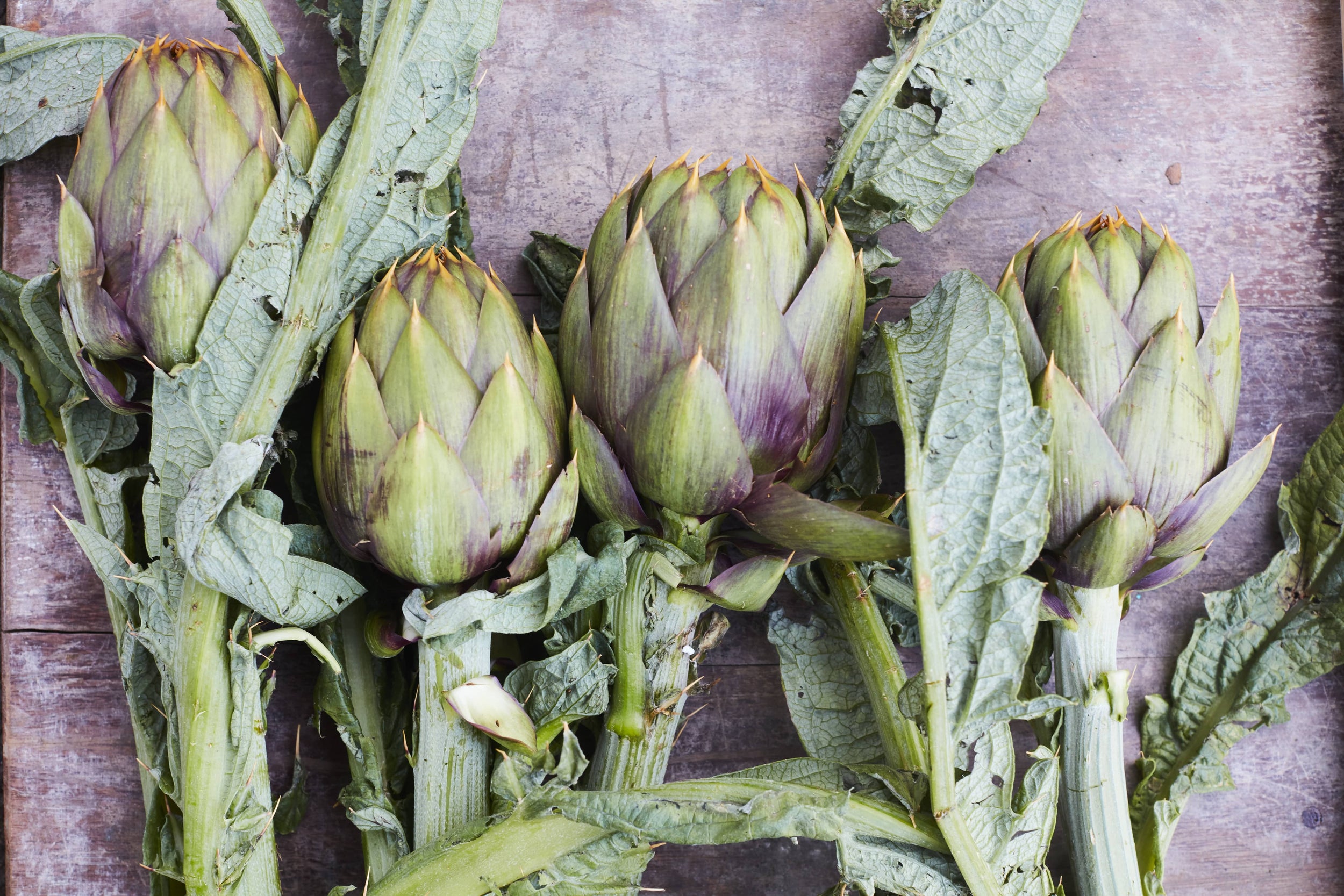Popular searches
Main menu
recipes menu
recipes
locations menu
locations
shop menu
shop
search
Popular searches
The immature flower bud of a thistle, now eaten as a vegetable.
Artichoke season is around October to April. May at a push. But there are three main rules to buying artichoke. They must a) feel heavy b) have squeaky leaves (non-squeaky artichokes aren’t fresh) and c) those leaves must be closed – remember, artichokes are flower buds, as they age their leaves open up.
To keep them fresh, it’s best to refrigerate–they’ll keep for up to a week. For a slightly longer shelf life, place them stem-down in water.
The tender ends of the leaves and the heart of the bed are edible; the tough outside leaves and furry central choke are not.
We can thank Zeus for the artichoke. Ancient Greeks believed that as punishment for deceiving him, Zeus turned his lover Cynara into an artichoke. In Italy, and the rest of the Mediterranean, artichokes were considered both a delicacy and an aphrodisiac. Today, there are more than 100 varieties worldwide, ranging from dark green to deep purple. From large spheres to long ovals.
Everything about an artichoke suggests it doesn’t want to be eaten; its armour petals, prickly thorns, and furry choke. But, with the right know-how, it’s easy to get them ready for eating. Before you begin, fill up a large bowl of cold water. And pop some gloves on.

Surprisingly, the Jerusalem artichoke isn't really an artichoke, nor does it come from Jerusalem. It belongs to the sunflower family, has edible tubers, and looks like a knobbly potato. When cooked, they offer a sweet, nutty flavour. Try our roast parsnips and jerusalem artichokes with cavalo nero and stilton.
A whole artichoke (steamed or boiled) is a perfect addition to a sharing feast. Pop it in the centre of the table and let everyone pick at the leaves, dipping in a pink peppercorn aioli or an anchovy butter, perhaps.
Fill a large saucepan with enough water to come halfway up the sides. Add some aromatics (like bay leaves) and some citrus (like the juice and rind of a lemon) and add the artichokes to the water. Use a lid smaller than the pan (or a heat-proof plate, if that’s easier) to weigh down the artichokes and keep them submerged, then bring to a simmer and cook for an hour, until a skewer goes easily through the heart and the leaves peel off easily. Drain into a colander, keeping the artichoke tips facing downwards, and leave for five minutes, then transfer to a platter.
“Chef, any top tips when preparing an artichoke?”
Milli said using lemony water to prep your artichokes prevents browning as you prepare the rest. Katja reckons it’s all about the knife: it must be small, sharp and serrated. She also recommended buying the young, tender artichokes as they’re much easier to get to the heart of. Jake jumped in and pushed for the importance of wearing gloves. The raw artichoke fluid has a way of tainting everything you touch.